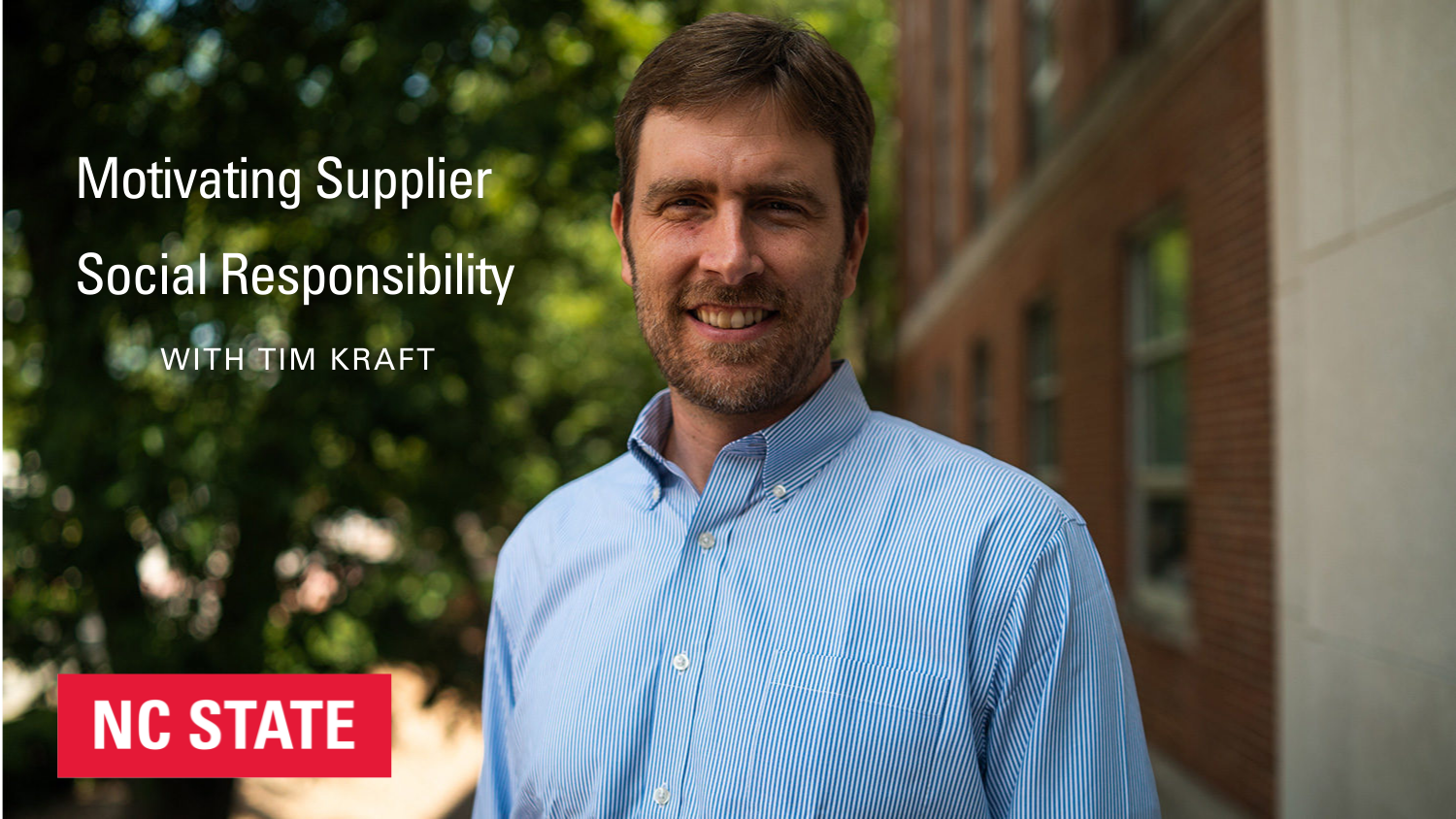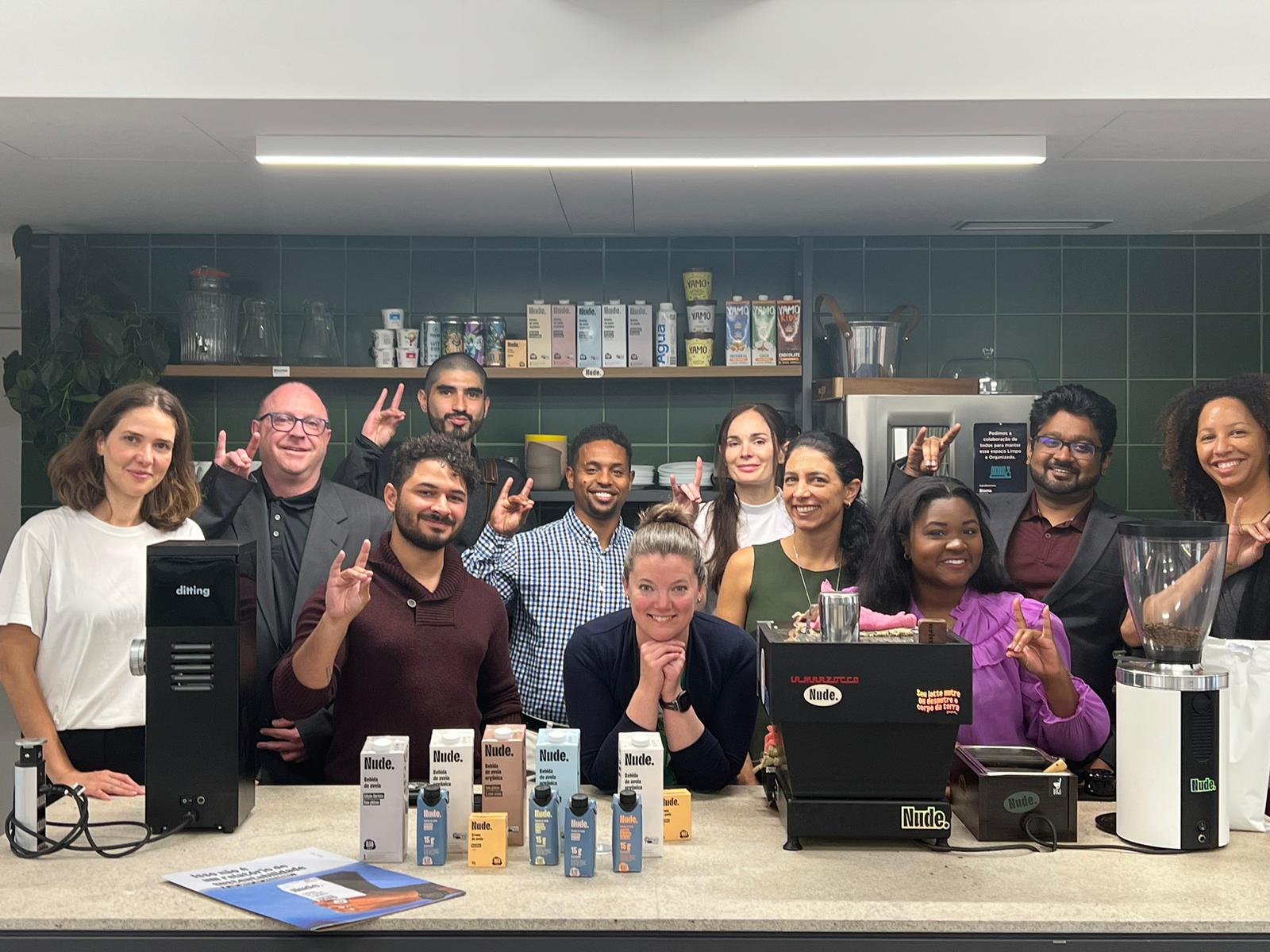Motivating Supplier Social Responsibility

By Stephanie Policastro
From coffee to clothing to cosmetics – and nearly everything in between – consumers are making conscious choices about the items they purchase. Knowing that products were made in a safe and sustainable manner matters, and more than ever, consumers expect companies to be transparent about manufacturing and supply practices.
And companies are taking notice – changing the way that they source materials and work with suppliers to encourage sustainability and ethical standards.
It’s a complex topic that Tim Kraft, Poole College associate professor of operations and supply chain management, explored in his study, “Motivating Supplier Social Responsibility Under Incomplete Visibility.” We spoke with Kraft to find out more about his study and the significance of socially responsible practices around the globe.
Q&A with Tim Kraft
What is Supplier Social Responsibility (SR)?
TK: A socially responsible company is one that focuses on the bottom line while acting in a manner that benefits society and the environment. In a supply chain context, this means ensuring that your upstream suppliers are following proper environmental practices and ensuring safe working conditions and fair wages for workers.
It seems that consumers today care a great deal about SR practices. Why do you think that is?
TK: Today’s consumers, especially younger generations, are more informed on the issues occurring in supply chains. Because of this, they are able to make more educated decisions when purchasing products and choosing which brands they want to support – which is incredibly important for driving change. With millennials and younger generations starting to demonstrate their purchasing power, they are driving change for the better in industry and supply chains.
What are the benefits of firms disclosing SR practices? And the risks?
TK: The communication of SR practices to consumers has become a differentiating factor in industries like apparel, coffee and chocolate. In some of our behavioral research, my colleagues and I have shown that the proper communication of SR practice to consumers can not only build trust with consumers, but that trust can further increase their willingness to buy a product.
Regarding risks, the traditional way of thinking was that communicating SR practices could open up a company to perceived greenwashing or the discovery of incorrect information. But the reality is that it’s becoming harder for companies not to be transparent. Technology and social media are making it easier to identify and communicate issues in supply chains for activists, groundbreaking regulations in the U.S. and abroad are being drafted which are requiring greater transparency, and Environmental, Social and Governance (ESG) investing is growing at an incredible rate.
In my view, companies that continue to avoid the issue are taking a very short-term perspective, and are not realizing that in the long term, they will have to be more transparent.
What are the biggest challenges for companies when establishing SR practices?
TK: Establishing a socially responsible supply chain takes an extensive amount of work, time and resources. And the process certainly doesn’t come without challenges. Two of the biggest being lack of infrastructure in the upstream supply chain and issues with second- and third-tier suppliers.
The lack of infrastructure, which stems from a shortfall of defined processes, technology capabilities and management training on the issues, make it difficult to improve practices. It often takes a deep commitment from a downstream brand of putting resources on the ground, working hand-in-hand with a supplier, to truly improve SR practices.
Regarding the upper tiers of the supply chain, it’s important to realize how large and complex supply chains can get. For example, NIKE has 500+ first-tier suppliers across 40+ countries. It takes a massive team of internal and external auditors just to perform annual and biennial audits on these suppliers. Now, imagine how many suppliers these first-tier suppliers all have – trying to then directly monitor these suppliers is close to impossible. Unfortunately, the problem with this is that we know that many of the sustainability issues occurring in supply chains happen at upper tier suppliers.
Why do so many companies have poor visibility into their suppliers’ practices?
TK: As with establishing SR practices, improving visibility in a supply chain does not come without barriers. For example, a downstream company may lack the leverage to push suppliers to be more transparent. Or, there can be a misalignment of incentives between downstream companies and suppliers – that is, the downstream company is consumer facing and is being pressured to be more sustainable and transparent, whereas the suppliers are not.
How can businesses better motivate their suppliers?
TK: One of the things we’ve learned studying this topic over the years is that collaboration and active engagement by downstream companies is critical for improvement. Too often we see this being treated as a compliance requirement, which typically doesn’t lead to great results because in many cases, suppliers exert the bare minimum effort to comply. Instead, we’ve found that it is much more effective when a company is collaborative in its efforts and willing to “get its hands dirty” by investing in and working with the supplier.
What is your perspective on the future of these practices?
TK: We’re very much in the early stages on this topic. Transparency continues to be a challenge for many industries and we are still struggling to make progress. At the same time, the external pressure on companies to fix and be transparent about what is occurring in their supply chains continues to grow.
That said, there’s a great opportunity in this space for innovation. Traditionally, companies have relied on audits to gain visibility into their supply chains, and while audits are an important tool, they are infrequent snapshots and can often be gamed by suppliers. There’s a need for companies to add “new tools” to their toolbox, and there are a number of companies developing new innovations. For example, solutions like using predictive analytics to identify forced labor issues by combining audit data with external data sources such as GPS data, utilities usage and bus schedules. Similarly, creative ideas such as crowdsourcing visibility into potential problem facilities using texts sent from workers’ phones that are aggregated into a dashboard that downstream companies can use to monitor issues. These types of innovative business ideas can really play a big role in the evolution of supply chain transparency.
Any additional insight you can share about your continued research on SR practices?
TK: Rob Handfield, Bank of America University distinguished professor of supply chain management at NC State and director of the Supply Chain Resource Cooperative, Marguerite Moore, Wilson College of Textilesprofessor, myself, and a team from NC State are working on a three-year grant to develop a transparency mechanism to promote ethical production in global apparel supply chains. It’s a massive undertaking that has been challenging, but it’s also been a really interesting experience as we interact with the different stakeholders across the apparel supply chain. For anyone that is interested, I would encourage them to check out the website.
This post was originally published in Poole Thought Leadership.
- Categories:


